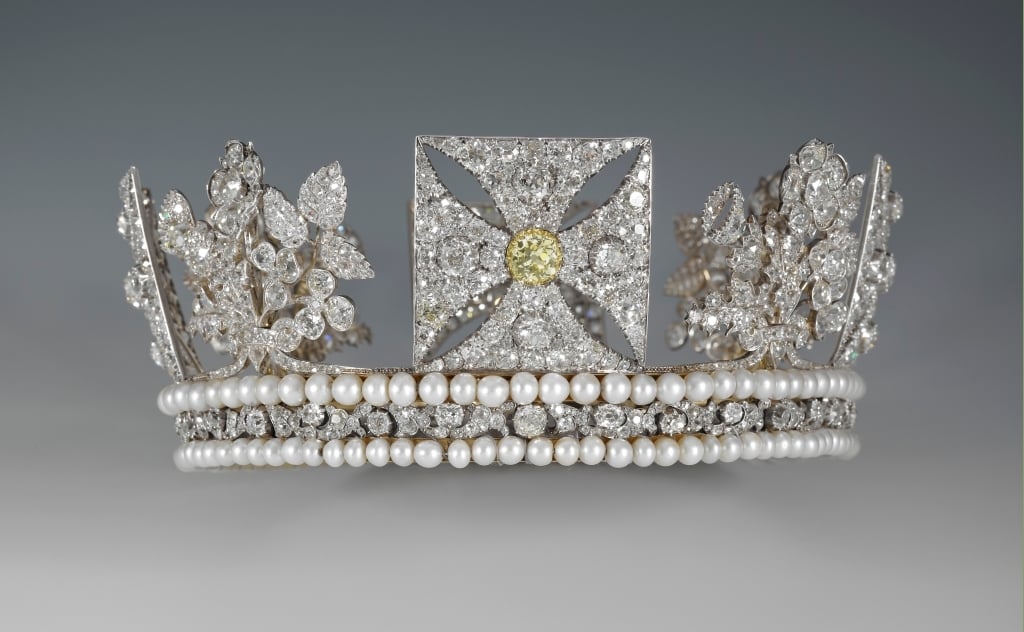Diamonds in the Royal Collection
Dazzling pieces of jewellery, insignia and other works of art

Since the Tudor and Stuart period successive monarchs have used diamonds to add to the aura of sovereignty. Elizabeth I (1533–1603) was almost always portrayed bejewelled from head to toe, with precious stones embroidered onto her clothes and adorning her hair. In the decades before and after the Civil War, diamonds also became increasingly popular at court as accessories for a new and lighter fashion of dress.
During the following century, George II (1683–1760) frequently used jewels to great effect on ceremonial occasions, wearing diamond hat and coat buttons in addition to his Garter Star and Great and Lesser Georges. His great-grandson, George IV (1762–1830), also had a life-long passion for jewels and his extravagant spending on diamonds added to his huge debts. His purchases included the magnificent Diamond Diadem, which he commissioned from the royal goldsmiths and jewellers Rundell, Bridge & Rundell for his 1821 coronation.
In the reign of Queen Victoria (1819–1901) diamonds played a highly personal role, often incorporated into gifts from Prince Albert to mark significant events in their life together.
In 1850, the queen was also presented with one of the most famous diamonds in the world, the Koh-i-nûr, brought from the Treasury of Lahore. Her son King Edward VII (1841–1910) later received the Cullinan Diamond – the largest diamond ever found – as a symbolic gift from the Government of the Transvaal after the Boer War.
The word 'diamond' appears as early as 300 BC and derives from the Greek adamas, meaning 'unconquerable, either by fire or by blows'. Diamond jewels and diamond-set works of art used by Queen Elizabeth II span three centuries of history, embodying a diversity of cutting and mounting techniques. Some form part of the Crown Jewels in the Tower of London, or pieces of Queen Elizabeth II's personal jewellery; others are shown here.
Click on an object to find out more.







